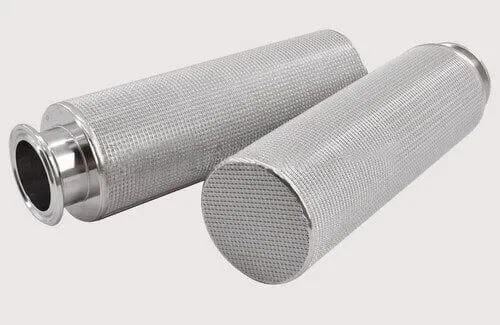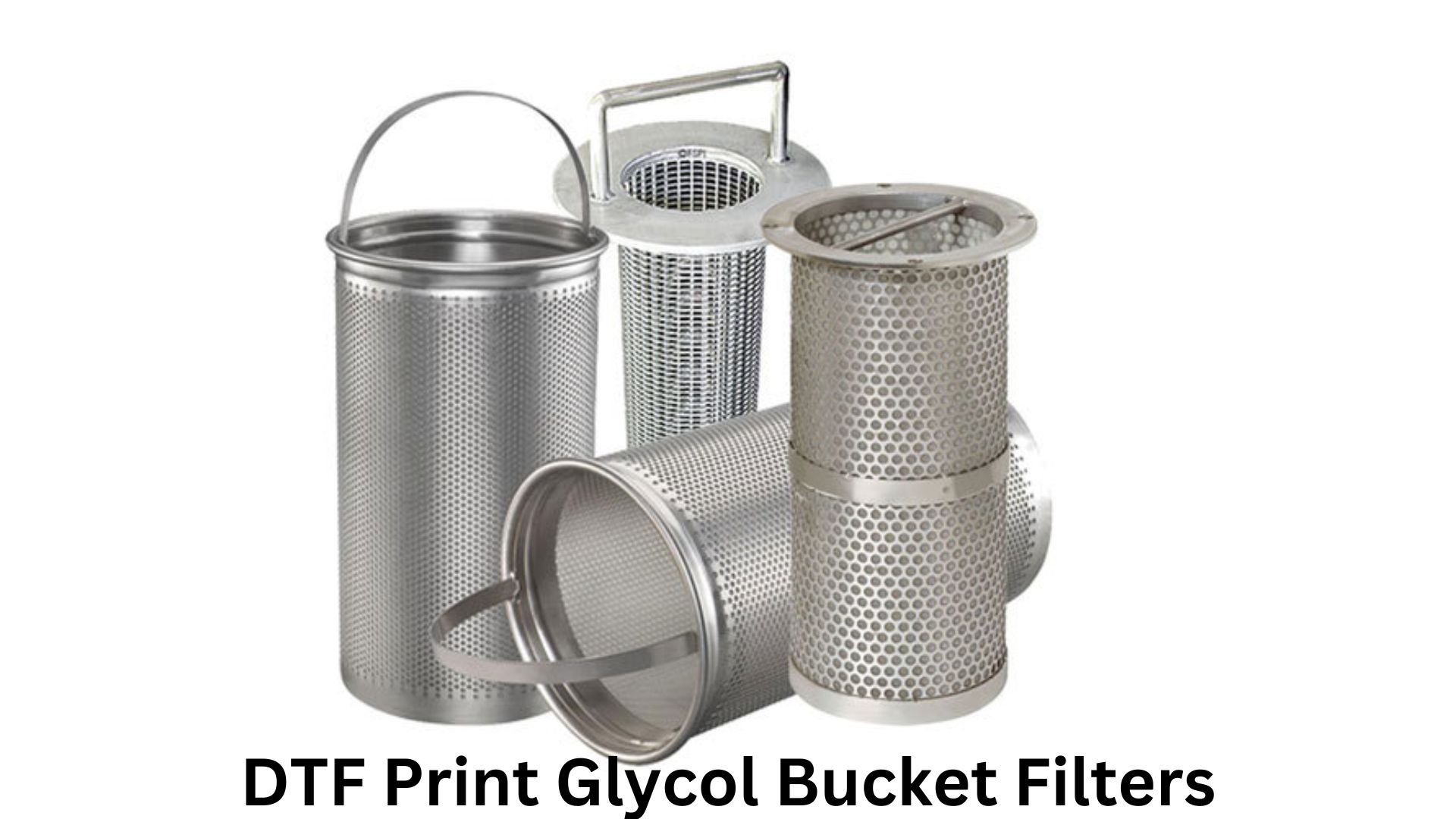Introduction
Direct-to-Film (DTF) printing has revolutionized the garment and textile printing industries by offering high-quality, durable prints. One key component that ensures the longevity and functionality of DTF printers is the glycol bucket filter. While often overlooked, this essential part of the printer’s cooling system helps to maintain optimal printing performance by ensuring that glycol—the coolant circulating throughout the printer—remains clean and free of contaminants. This article will dive into the significance of glycol DTF Print Glycol Bucket Filters, explaining their purpose, how they work, why they are vital, the features to look for when purchasing one, and best practices for maintenance. Whether you’re new to DTF printing or looking to improve your existing setup, understanding the glycol bucket filter will help you achieve better results and keep your printing operation running smoothly.
What Is a DTF Print Glycol Bucket Filters?
The Role of Glycol in DTF Printers
To fully appreciate the importance of a glycol bucket filter, it’s important to first understand the role of glycol in a DTF printer. Glycol is a coolant that helps regulate the printer’s internal temperature during the printing process. Printers, especially those used for DTF, generate substantial heat as they print and cure images onto film. This heat can damage the printer’s components, such as the printhead, if not managed properly. The glycol coolant absorbs this heat, preventing the printer from overheating and ensuring optimal performance.
However, over time, glycol can accumulate contaminants such as dust, ink residue, and particles from the surrounding environment. These contaminants can negatively affect the printer’s cooling system, leading to issues such as reduced print quality, overheating, and increased maintenance requirements. This is where the glycol bucket filter comes into play.
What Does the Glycol Bucket Filter Do?
A DTF Print Glycol Bucket Filters is a filtration device that removes contaminants from the glycol solution used in DTF printers. It is typically housed in a bucket or container and designed to filter out impurities like dust, dirt, and debris that could otherwise clog or damage the printer’s cooling system. The filter works by circulating the glycol through the system, where it is cleaned before being recirculated into the cooling system. This ensures that the glycol remains clean, the printer remains cool, and the overall printing process continues to run smoothly.
Why Is the DTF Print Glycol Bucket Filters Printing?
1. Ensures Efficient Cooling
The main function of glycol in DTF printing is to maintain a consistent temperature across the printer’s internal components. Glycol helps prevent overheating, which can cause the printer to malfunction or print poorly. By filtering out contaminants, the glycol bucket filter ensures that the coolant remains effective, maintaining the cooling system’s performance. When the glycol is clean, it circulates more efficiently, keeping the printer at the ideal temperature.
2. Prevents Clogging and Malfunctions
Over time, contaminants such as dust and debris can accumulate in the glycol solution. These particles can clog the printer’s internal cooling components, such as hoses, pumps, and printheads. A clogged cooling system can lead to serious malfunctions, increased downtime, and costly repairs. By using a glycol bucket filter, these particles are captured before they can cause any issues, thereby preventing blockages and malfunctions in the system.
3. Maintains Print Quality
DTF Print Glycol Bucket Filters is highly dependent on the printer’s ability to maintain a stable internal temperature. If the printer overheats due to inadequate cooling, the print quality may suffer. For example, uneven cooling can cause color distortions, smudging, or poor adhesion of the ink onto the substrate. By ensuring that the glycol remains clean and functional, the glycol bucket filter helps preserve print quality by keeping the printer at the correct temperature for optimal ink transfer.
4. Extends Printer Lifespan
DTF printers are expensive pieces of equipment, and regular maintenance is essential for keeping them running smoothly. A glycol bucket filter helps extend the lifespan of a printer by preventing damage to critical components. When contaminants are filtered out, the glycol remains effective, reducing the risk of overheating and the need for repairs. Over time, this leads to fewer breakdowns and longer service life for the printer.
Also read: M32t Pro160 Negative on The Capacitor Starts Smoking
How Does the DTF Print Glycol Bucket Filters?
Understanding the mechanics of how a glycol bucket filter works can help you see why it is such a critical component of the DTF printing process. The operation of a glycol bucket filter can be broken down into several steps:
Step 1: Glycol Circulates Through the Cooling System
As the printer operates, glycol flows through the internal cooling system, absorbing heat generated by the printing and curing processes. The glycol solution travels through tubes and hoses, circulating through various parts of the printer that require cooling, such as the printhead, the heat plate, and the ink delivery system.
Step 2: Glycol Passes Through the Glycol Bucket Filter
After circulating through the cooling system, the glycol flows into the glycol bucket filter, which is positioned within a separate container. The filter is designed to catch and remove any particles, dust, or ink residue that might have accumulated in the glycol. This is usually achieved through a mesh or a series of filter media that allow the glycol to pass through while trapping contaminants.
Step 3: Clean Glycol Is Reintroduced to the Cooling System
Once the DTF Print Glycol Bucket Filters, it is returned to the cooling system. The now clean glycol resumes its cooling function, circulating through the printer to prevent overheating and ensure smooth operation.
Step 4: Periodic Maintenance and Cleaning
As contaminants build up in the filter over time, it will need to be cleaned or replaced to maintain its effectiveness. Depending on the type of filter, this might involve cleaning the filter media or replacing it entirely. Regular maintenance ensures that the glycol continues to circulate efficiently and that the cooling system remains free from blockages.
Key Features to Look for in a Glycol Bucket Filter
When shopping for a DTF Print Glycol Bucket Filters, it’s important to consider several factors to ensure you get the right product for your printer. Below are the key features to look for when selecting a glycol bucket filter:
1. High Filtration Efficiency
The primary function of a glycol bucket filter is to capture and remove contaminants from the glycol solution. To do this effectively, the filter should have high filtration efficiency. Look for filters with fine mesh or multi-layered filtration systems that can capture both large and small particles. The higher the filtration efficiency, the better the filter will be at keeping the glycol clean.
2. Durability and Construction Quality
The glycol bucket filter will be exposed to high temperatures and constant flow of glycol, so it must be built from durable materials. Look for filters made from heat-resistant plastics or metals, such as stainless steel, that can withstand the demands of the printing environment. Durable construction ensures the filter will last longer and perform reliably.
3. Ease of Maintenance
A DTF Print Glycol Bucket Filters that is easy to clean and maintain will save you time and hassle. Choose a filter with simple, user-friendly components that can be easily disassembled and cleaned. Some filters are designed with removable cartridges or mesh, which makes maintenance quicker and easier. Look for filters that allow for quick replacement of the filter media to minimize downtime.
4. Compatibility with Your Printer
Not all glycol bucket filters are compatible with all DTF printers. Be sure to choose a filter that matches the specifications and requirements of your printer model. Compatibility includes factors such as the size and capacity of the filter and its ability to work with the glycol solution used in your printer.
5. Cost-Effectiveness
While it’s essential not to compromise on quality, the glycol bucket filter should also offer value for money. A filter with a longer lifespan, high filtration efficiency, and ease of maintenance will save you money in the long term by reducing the frequency of replacements and minimizing downtime. Compare different options to find a filter that strikes the right balance between cost and performance.

Best Practices for Maintaining Your DTF Print Glycol Bucket Filters
To ensure your glycol bucket filter continues to perform optimally, regular maintenance is essential. Here are some best practices to keep in mind:
1. Regular Cleaning
Over time, contaminants will accumulate in the filter, so it’s crucial to clean it regularly. Depending on the frequency of use and the printer’s operating conditions, you should clean the filter every 1 to 2 weeks. Use a mild detergent or cleaning solution and a soft brush to gently remove any particles from the filter. Avoid using harsh chemicals that could damage the filter.
2. Inspect the Glycol Solution
In addition to maintaining the filter, regularly check the glycol solution for contaminants. If the glycol appears cloudy or contains visible particles, it may be time to clean or replace the filter. If necessary, replace the glycol solution entirely to ensure the cooling system works efficiently.
3. Replace the Filter Media
Even with regular cleaning, the DTF Print Glycol Bucket Filters media will wear out over time. Replace the filter media as per the manufacturer’s recommendation to ensure continued filtration efficiency. If your filter has a replaceable cartridge, be sure to replace it when it becomes too clogged or ineffective.
4. Monitor the Printer’s Cooling System
While the glycol bucket filter is a critical component, the overall cooling system should also be inspected periodically for any signs of damage or inefficiency. Check for leaks in the tubing, worn-out seals, or clogged hoses that might affect the flow of glycol. Keep the entire system in good working condition to ensure optimal printer performance.
Conclusion
The DTF Print Glycol Bucket Filters plays an integral role in maintaining the performance and longevity of DTF printers. By keeping the glycol solution clean and free of contaminants, the filter ensures that the printer’s cooling system operates efficiently, preventing overheating and damage to critical components. In turn, this leads to better print quality, fewer malfunctions, and extended equipment life.
By understanding the functionality, importance, and maintenance of glycol bucket filters, DTF printing operators can optimize their workflow, reduce downtime, and ensure that their printers continue to deliver high-quality prints. Investing in a high-quality glycol bucket filter and following proper maintenance practices will ultimately pay off in the form of smoother operations, fewer repairs, and greater overall productivity.
